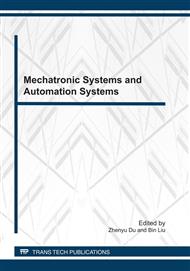p.518
p.524
p.530
p.536
p.542
p.551
p.557
p.562
p.568
A New Image Quality Assessment Method Based on SSIM and TV Model
Abstract:
In this paper, a new image quality assessment method has been proposed in which can judge the quality of images without explicit knowledge of the reference images ,it is based on the SSIM(Structural Similarity) and TV(total variation) model. Firstly, add noises to distorted image to quantitatively determine, it can get the degraded image; secondly, use the improved self-adaptive gradient weights of the TV algorithms to denoising the distorted image, it can get the “fake” reference image, then use the classical SSIM methods to make reference evaluation between the distorted image and the “fake” reference image, after modified, the results is the no reference evaluating indicator. The experiment separated use the standard testing images and the degraded images from the LIVE database to make evaluate experiment, the result show that it is consistent to the result of MOS. This method is no need of reference images, it can use widely.
Info:
Periodical:
Pages:
542-550
Citation:
Online since:
June 2011
Authors:
Keywords:
Price:
Сopyright:
© 2011 Trans Tech Publications Ltd. All Rights Reserved
Share:
Citation:


